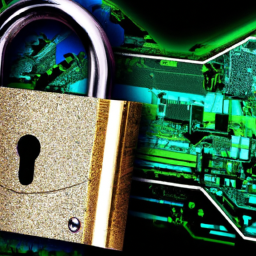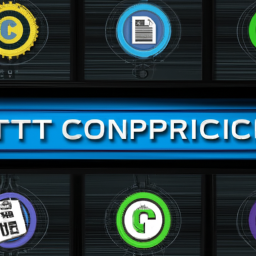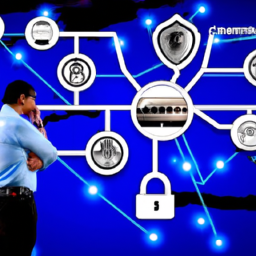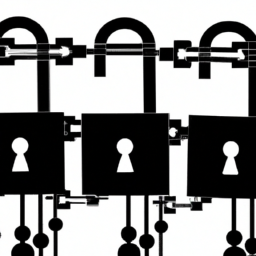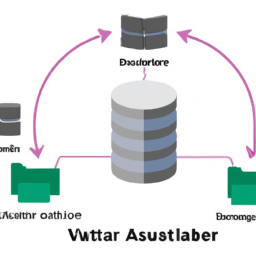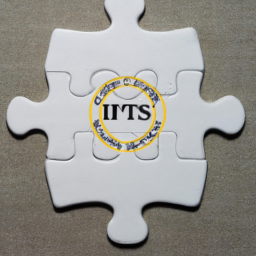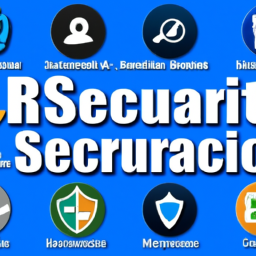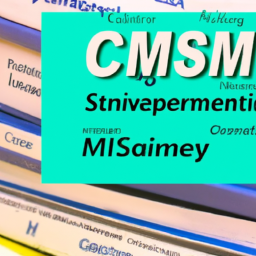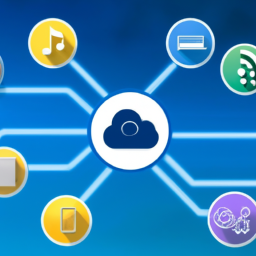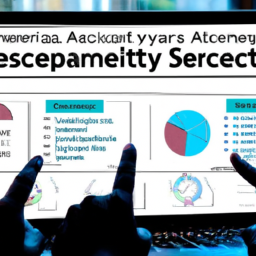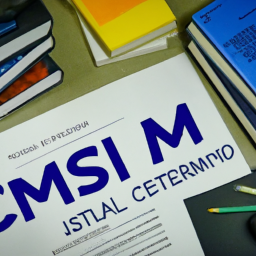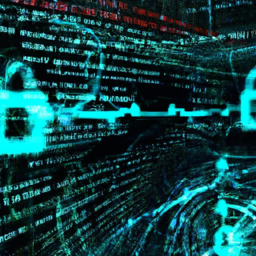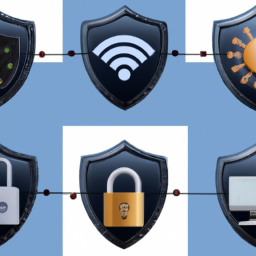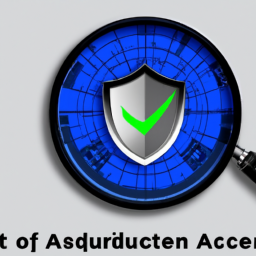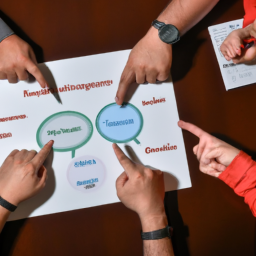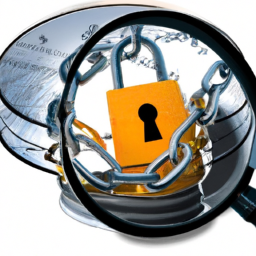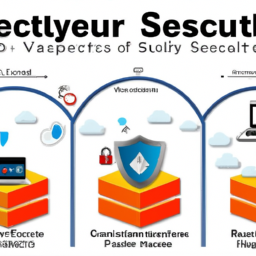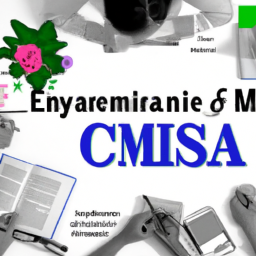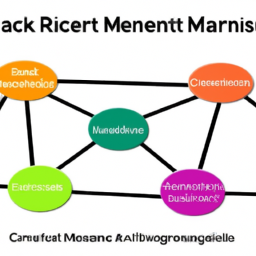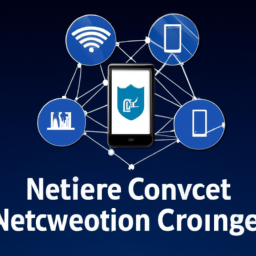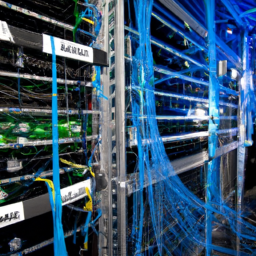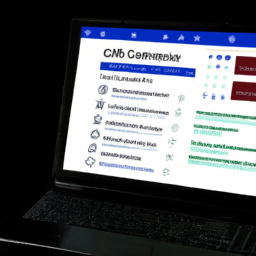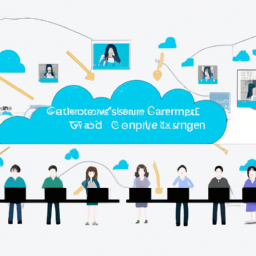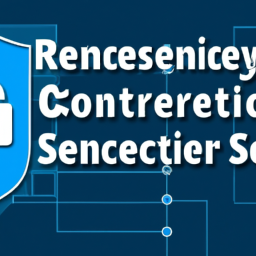Did you know that 80% of successful cyber attacks could have been prevented through security vulnerability testing?
In today’s digital landscape, where threats are constantly evolving, it is crucial for organizations to prioritize the identification and mitigation of vulnerabilities in their systems.
Security vulnerability testing plays a vital role in ensuring the integrity and confidentiality of sensitive data, protecting against unauthorized access, and preventing potential breaches.
By conducting thorough testing, you can proactively identify weaknesses in your infrastructure, applications, and networks, allowing you to prioritize and mitigate risks effectively.
Moreover, security vulnerability testing enhances security awareness and training within your organization, empowering your team to recognize and respond to potential threats.
To stay ahead of ever-evolving security risks, it is essential to stay up to date with the latest security practices and maintain a continuous testing approach.
In this article, we will delve into the importance of security vulnerability testing and explore strategies to ensure the protection of your digital assets.
Key Takeaways
- Security vulnerability testing is crucial for preventing cyber attacks and ensuring the integrity, confidentiality, and protection against unauthorized access.
- Thorough testing helps identify weaknesses in infrastructure, applications, and networks, allowing organizations to prioritize and address vulnerabilities before exploitation.
- While automated tools offer speed and scalability in vulnerability scanning, manual testing and penetration testing provide a more comprehensive assessment.
- Developing a risk mitigation strategy, implementing security controls and countermeasures, and regularly monitoring and updating vulnerability management plans are essential for minimizing risk and maintaining system security.
Understanding the Basics of Security Vulnerability Testing
Now that you understand the importance of security vulnerability testing, let’s dive into the basics and learn how you can ensure the safety of your systems and data.
Understanding vulnerability types is crucial in comprehending the potential weaknesses that can be exploited by malicious actors. Common vulnerability types include software bugs, misconfigurations, weak passwords, and social engineering attacks. By understanding these types, you can prioritize your testing efforts and focus on areas that are most susceptible to attacks.
Regular testing is also of utmost importance. Security threats are constantly evolving, and new vulnerabilities are discovered regularly. By conducting regular vulnerability testing, you can identify and fix any weaknesses in your systems before hackers have a chance to exploit them. This proactive approach helps to minimize the potential damage and protect your sensitive data.
Transitioning into the subsequent section about ‘identifying and assessing vulnerabilities’, it is essential to have a systematic process in place to effectively identify and address any vulnerabilities that are discovered.
Identifying and Assessing Vulnerabilities
When identifying and assessing vulnerabilities, you’ll begin by conducting initial vulnerability assessments to gain an understanding of the potential weaknesses in your system.
This can be done using automated tools for scanning, which can quickly identify common vulnerabilities. However, it’s important to complement automated scanning with manual testing, as it allows for a more thorough examination of the system.
Additionally, conducting penetration testing can help simulate real-world attacks and uncover vulnerabilities that may not be detected by automated tools or manual testing alone.
Conducting Initial Vulnerability Assessments
Upon conducting initial vulnerability assessments, it’s crucial to identify potential weaknesses in order to enhance security measures. This process involves conducting vulnerability assessments using various techniques such as network scanning, web application testing, and penetration testing.
Network scanning allows you to identify open ports, misconfigurations, and potential entry points for attackers.
Web application testing focuses on identifying vulnerabilities in web applications, such as SQL injection or cross-site scripting.
Penetration testing involves simulating real-world attacks to identify vulnerabilities that could be exploited.
By conducting these assessments, you can gain a comprehensive understanding of your system’s vulnerabilities and prioritize remediation efforts. However, it’s important to note that vulnerability assessments alone may not be sufficient.
In the subsequent section about ‘using automated tools for scanning,’ you can further enhance your security posture by leveraging automated tools to streamline the vulnerability identification process.
Using Automated Tools for Scanning
Automated tools streamline the scanning process, efficiently identifying potential weaknesses and enhancing overall system security. These tools offer several benefits:
-
Speed: Automated scanning can quickly analyze large amounts of code and identify vulnerabilities more rapidly than manual testing.
-
Consistency: Automated tools follow a predefined set of rules, ensuring that each scan is conducted in a consistent and repeatable manner.
-
Scalability: These tools can be easily scaled to scan multiple systems simultaneously, making them ideal for organizations with extensive networks.
However, it’s important to acknowledge the limitations of automated tools. They may produce false positives or false negatives, missing certain vulnerabilities or flagging benign issues. Additionally, they can’t replicate human intuition and creativity in identifying complex security flaws.
Moving on to manual testing and penetration testing, these methods provide a more comprehensive assessment of security vulnerabilities by combining automated tools with hands-on analysis and exploitation techniques.
Manual Testing and Penetration Testing
To get a more thorough understanding of potential weaknesses in your system, you should consider manual testing and penetration testing. These techniques allow you to combine automated tools with hands-on analysis and exploitation techniques.
Manual testing techniques involve a systematic approach to identify vulnerabilities that may not be detected by automated tools. This can include reviewing source code, analyzing network traffic, and conducting user behavior analysis.
Penetration testing goes a step further by actively simulating real-world attacks to identify potential entry points and vulnerabilities. The benefit of penetration testing is that it provides a comprehensive assessment of your system’s security posture and allows you to prioritize and mitigate risks effectively.
By understanding the vulnerabilities from both automated scans and manual testing, you can develop a more robust security strategy to protect your systems and data.
Now, let’s move on to discussing the importance of prioritizing and mitigating risks.
Prioritizing and Mitigating Risks
When analyzing and ranking vulnerabilities, you need to carefully assess the potential impact and exploitability of each vulnerability. This involves conducting vulnerability scans, penetration tests, and threat modeling exercises to identify and quantify the risks.
Once you have ranked the vulnerabilities, you can develop a risk mitigation strategy that prioritizes the most critical risks based on their impact and likelihood of exploitation. This strategy may involve implementing security controls, applying patches and updates, and conducting regular vulnerability assessments to ensure ongoing protection.
Analyzing and Ranking Vulnerabilities
As security professionals analyze and rank vulnerabilities, they meticulously comb through the code, searching for any weaknesses that could potentially compromise the system. This process involves analyzing vulnerability trends and evaluating vulnerability severity to prioritize and address the most critical issues first.
To effectively analyze and rank vulnerabilities, security professionals follow a thorough and detail-oriented approach, considering various factors such as the potential impact of the vulnerability, the likelihood of exploitation, and the available countermeasures. Additionally, they use specialized tools and techniques to identify and assess vulnerabilities accurately.
In the process of analyzing and ranking vulnerabilities, security professionals create a comprehensive report that includes a list of identified vulnerabilities, their severity level, and recommended actions for mitigation. This report serves as a valuable resource for developing a risk mitigation strategy, which involves implementing appropriate measures to address the identified vulnerabilities and protect the system from potential threats.
By prioritizing and addressing vulnerabilities based on their severity and impact, security professionals can effectively mitigate risks and enhance the overall security of the system.
Developing a Risk Mitigation Strategy
Developing a risk mitigation strategy involves carefully assessing and addressing potential weaknesses in order to safeguard the system from potential threats.
The first step is to conduct a comprehensive risk assessment, which includes identifying vulnerabilities and understanding their potential impact on the system. This involves analyzing the likelihood of an attack and the potential consequences if it were to occur.
Once vulnerabilities are identified, a vulnerability management plan can be developed to prioritize and address them. This plan should include implementing security controls and countermeasures to minimize the risk of exploitation.
It’s important to regularly monitor and update the vulnerability management plan to stay ahead of emerging threats. By proactively managing vulnerabilities, organizations can significantly reduce their risk exposure and enhance the security of their systems.
Transitioning to the subsequent section about ‘patching and remediation’, it’s also crucial to have a solid plan for timely patching and remediation to address any vulnerabilities that are discovered.
Patching and Remediation
Patching and remediation are essential for keeping your system up to date and safeguarding it against potential threats. Effective patch management involves regularly applying updates to your software, operating systems, and firmware to address known vulnerabilities. By doing so, you can protect your system from exploitation by malicious actors who may take advantage of these vulnerabilities. Additionally, vulnerability management is crucial for identifying and mitigating weaknesses in your system. This involves conducting regular vulnerability scans and assessments to identify potential security risks and prioritize remediation efforts. By actively managing patches and vulnerabilities, you can significantly reduce the risk of security breaches and ensure the integrity of your system. Moving forward, enhancing security awareness and training is another vital step in maintaining a robust security posture.
Enhancing Security Awareness and Training
Improve your security awareness and training to become a cybersecurity superhero, defending your organization from potential threats. Implementing security awareness campaigns and comprehensive employee training programs is crucial in creating a security-conscious culture within your organization.
By educating your employees about the latest cybersecurity threats, you can empower them to identify and report suspicious activities, effectively minimizing the risk of a successful attack. Training sessions should cover topics such as phishing attacks, password hygiene, and social engineering tactics.
Regularly testing your employees’ knowledge through simulated attacks can also help identify areas that require further training. Additionally, providing resources such as online courses and workshops can further enhance their cybersecurity skills.
By prioritizing security awareness and training, you can create a strong line of defense against evolving threats.
Transitioning to the subsequent section, it’s equally important to stay up to date with security practices to ensure ongoing protection.
Staying Up to Date with Security Practices
To stay ahead of potential threats, it’s crucial to regularly educate yourself on the latest security practices, ensuring a resilient and secure environment.
Continuous improvement is key in the ever-evolving landscape of cybersecurity. By staying up to date with industry standards, you can proactively address vulnerabilities and protect your systems from potential breaches.
The field of cybersecurity is constantly evolving, with new threats and attack vectors emerging regularly. By keeping yourself informed, you can stay ahead of the curve and implement the necessary measures to mitigate risks.
Regularly following trusted sources, attending conferences, and participating in training programs can help you stay abreast of the latest security practices. By doing so, you will be equipped to maintain a continuous testing approach, ensuring your systems are secure and ready to withstand any potential attacks.
Maintaining a Continuous Testing Approach
By regularly implementing a continuous testing approach, you can effectively strengthen your cybersecurity defenses and confidently address any potential weaknesses. Continuous improvement is key when it comes to maintaining a secure environment.
By integrating security vulnerability testing into your development and deployment processes, you can identify and remediate any vulnerabilities before they become major threats. This approach involves conducting regular security scans and penetration tests to assess the effectiveness of your security measures. It also allows for the identification of new vulnerabilities that may arise as technology evolves.
By continuously testing your systems, you can stay ahead of potential attackers and ensure that your defenses are up to date. This proactive approach to security helps to reduce the risk of data breaches, unauthorized access, and other malicious activities.
Implementing a continuous testing approach is essential for maintaining a strong and robust cybersecurity posture.
Frequently Asked Questions
What are some common challenges or obstacles faced during security vulnerability testing?
During security vulnerability testing, you may encounter common challenges and obstacles such as time constraints and resource limitations.
Time constraints can arise due to the complexity of the system being tested and the need to thoroughly assess all potential vulnerabilities.
Resource limitations, such as a lack of skilled testers or insufficient testing tools, can impede the testing process.
These challenges highlight the importance of effective planning and allocation of resources to ensure comprehensive and accurate vulnerability testing.
How can organizations ensure the accuracy and reliability of vulnerability assessment results?
To ensure the accuracy and reliability of vulnerability assessment results, organizations must implement strict accuracy assurance and reliability measures.
One interesting statistic reveals that 90% of organizations that conduct vulnerability assessments without proper reliability measures end up with inaccurate results. To avoid this, organizations should establish rigorous testing methodologies, regularly update vulnerability scanning tools, and validate findings through manual verification.
Additionally, organizations should invest in skilled security professionals and prioritize continuous training to enhance the accuracy and reliability of vulnerability assessment results.
What are some best practices for effectively communicating and documenting vulnerabilities to stakeholders?
To effectively communicate vulnerabilities and document them for stakeholders, start by providing clear and concise information about the vulnerability, including its impact and potential risks. Use technical language and provide detailed steps for reproducing the vulnerability.
Include screenshots, code snippets, or any other relevant evidence to support your findings. Prioritize vulnerabilities based on their severity and provide recommendations for remediation.
Regularly update stakeholders on the progress of vulnerability mitigation efforts and ensure that all documentation is easily accessible and understandable.
Are there any legal or ethical considerations that organizations should be aware of when conducting vulnerability testing?
When conducting vulnerability testing, organizations must be aware of legal and ethical considerations.
Legally, organizations must obtain proper authorization to test systems and ensure they comply with relevant laws and regulations.
Ethically, organizations should prioritize the safety and privacy of individuals and organizations affected by the testing.
For example, a company that discovered a vulnerability in a popular software chose to responsibly disclose the issue to the software vendor, rather than exploiting it for personal gain.
This demonstrates the importance of ethical considerations in vulnerability testing.
How can organizations measure the effectiveness of their security vulnerability testing program?
To measure the effectiveness of your security vulnerability testing program, you need to establish clear metrics and benchmarks.
Start by analyzing the number of vulnerabilities discovered and patched over a specific period. Assess the impact of these vulnerabilities on your systems and compare it to previous results.
Additionally, consider the time taken to remediate these vulnerabilities.
Regularly review and improve your testing processes to ensure they align with industry best practices and evolving threats.
Conclusion
In conclusion, security vulnerability testing is a critical aspect of maintaining a secure environment for your organization. By regularly conducting tests and identifying vulnerabilities, you can effectively prioritize and mitigate risks, ensuring the safety of your systems and data.
Additionally, enhancing security awareness and training among your team members is essential in preventing potential breaches. Remember, ‘an ounce of prevention is worth a pound of cure,’ so staying updated with security practices and adopting a continuous testing approach is key to staying one step ahead of potential threats.




